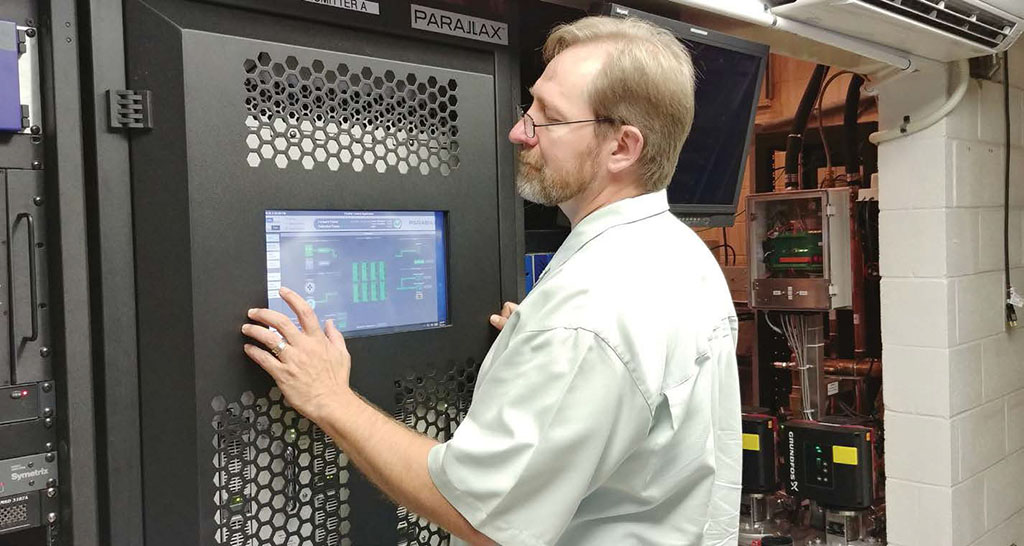Hitachi-Comark Brings Efficiency to WCTE Operations
COOKEVILLE, TENN.—Lots of TV towers live on the tops of mountains. In that respect, there’s nothing unique about the location of WCTE’s 800-foot broadcast tower outside Monterey, Tenn., about 10 mile drive from the PBS station’s Cookeville studio over mostly good roads. But when our engineers were having to drop everything and fix issues nearly every day—sometimes more than once—it seemed far too remote.
The trips were wearing us out physically and financially. In addition, we were spending a fortune on amplifiers and the ones we needed were getting hard to come by. The power supplies inside the amps were proprietary and couldn’t be repaired.
We needed something more reliable so last year we took delivery of a new Hitachi-Comark Parallax transmitter. In a week, the site team from Comark had installed the single-cabinet, complete with a new heat exchanger.

MODULAR POWER SUPPLIES
With the new transmitter installed, we’re not driving to the transmitter every day, and operation costs are about half as much as our old transmitter. Our first electric bill was literally half what we’d been spending, resulting in savings of at least $2,000 a month. It was that energy savings that allowed us to replace our old transmitter, though other factors were just as important. One of the biggest-selling points was the fact that Parallax amps have modular power supplies that can be purchased on eBay for about 5 percent of what we’d been paying every time we lost a power supply in an amp.
Since WCTE’s tower facility is located at the end of a road that runs several miles through mountainous woods, power failures are common. The emergency generator always kicks in and there are plans to purchase and install a UPS to carry the whole plant through the moment of failure before power is restored, but the ease with which Parallax recovers from a dip has been beneficial.
The transmitter powers back up within seconds and the web server allows us full control and monitoring from anywhere. We get emails from the Parallax immediately when there’s an issue—in nine months there hasn’t been anything but power company problems—but we can see voltages on each leg, water temperature and flow, error logs... everything you could ask for.
The professional video industry's #1 source for news, trends and product and tech information. Sign up below.
NEW COOLING SYSTEM
After the Parallax was installed, the site’s old transmitter became the backup, and aside from a new three-phase power circuit for the Parallax, the installation of the new cooling system was the only modification needed in the transmitter building. The new cooling system utilizes an indoor tank, further limiting exposure to ice-fall from the tower. The use of flexible hoses allowed for convenient placement of both the tank and the outdoor heat exchanger.
Even the efficiency of the cooling system is surprising. The heat exchanger didn’t run much at all during the fall and winter so I’ll be interested to see how it does in the summer, with the indoor tank and the reduced heat load. It’s gotten up to about 85 degrees outside already this spring, and our air conditioners don’t seem to be having any trouble keeping it cool indoors.
The Parallax has transformed how we work. WCTE only has two engineers, and we were scrambling to move our master control, maintain and operate a production truck and two IT networks and provide technical leadership for the station. When you take into account the cost savings on energy and on our time, it really has made a huge difference.
Craig LeFevre is a 12-year veteran of WCTE with an MBA from Tennessee Technological University and CBTE certification from the Society of Broadcast Engineers. He can be reached atclefevre@wcte.org.
For more information, visitwww.comarktv.comor call 800-345-9295.
